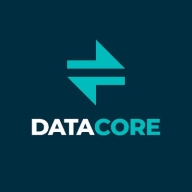


Red Hat Ceph Storage and DataCore SANsymphony compete in the storage solutions market. Red Hat Ceph has the upper hand in cloud integration and open-source flexibility, while DataCore SANsymphony offers superior performance and efficiency.
Features: Red Hat Ceph Storage's open-source and highly scalable architecture suits cloud-native applications, integrating well with OpenStack and Kubernetes. It supports block, object, and file storage from a single platform. Ceph's adaptability to various hardware adds to its flexibility. DataCore SANsymphony provides high data throughput with parallel I/O technology, enhancing performance. Its flexibility supports diverse storage devices, and it offers built-in continuous data protection, mirroring, and synchronous replication.
Room for Improvement: Red Hat Ceph Storage could streamline its deployment process to be more user-friendly. Improved support for hybrid environments can enhance its offerings. Enhanced user interfaces for configuration and management would be beneficial. DataCore SANsymphony could improve cost-effectiveness to attract a broader range of users. Enhanced integration with other platforms could expand its usability. Simplifying the licensing model may make it more attractive for varied businesses.
Ease of Deployment and Customer Service: Red Hat Ceph Storage has a complex deployment model that requires expertise but benefits from community support. DataCore SANsymphony offers straightforward deployment with intuitive management tools and professional support, easing implementation for IT teams.
Pricing and ROI: Red Hat Ceph Storage is initially cost-effective due to its open-source nature but may incur additional operational costs requiring skilled personnel. DataCore SANsymphony involves higher initial costs but provides a better long-term ROI through efficient resource use and reduced latency, justifying a premium price for organizations valuing performance.
| Product | Market Share (%) |
|---|---|
| Red Hat Ceph Storage | 18.4% |
| DataCore SANsymphony | 7.2% |
| Pure Storage FlashBlade | 4.1% |
| Other | 70.30000000000001% |



| Company Size | Count |
|---|---|
| Small Business | 11 |
| Midsize Enterprise | 11 |
| Large Enterprise | 20 |
| Company Size | Count |
|---|---|
| Small Business | 36 |
| Midsize Enterprise | 12 |
| Large Enterprise | 21 |
| Company Size | Count |
|---|---|
| Small Business | 13 |
| Midsize Enterprise | 4 |
| Large Enterprise | 15 |
FlashBlade is the industry’s most advanced scale-out storage for unstructured data, powered by a modern, massively parallel architecture to consolidate complex data silos (like backup appliances and data lakes) and accelerate tomorrow’s discoveries and insights.
Experience peace of mind with DataCore SANsymphony, the ultimate software-defined storage solution alleviating storage management challenges. Say goodbye to the complexities of managing different storage tiers and disruptions with SANsymphony's block-level storage virtualization technology, empowering you to automate capacity provisioning and data placement across diverse storage environments including SAN, DAS, HCI, and JBOD. Break down silos, control data placement, meet business continuity objectives, boost performance, and seamlessly expand or refresh hardware with SANsymphony. Benefit from features like asynchronous replication for disaster recovery, minimizing data loss, accelerating application responsiveness, and integrating new technology non-disruptively. Trusted by industry leaders like NASA, Thorntons, Inc., and TUI Cruises, DataCore SANsymphony guarantees unparalleled flexibility, scalability, and reliability, ensuring uninterrupted data access and application availability while reducing storage costs and inefficiencies.
We monitor all Software Defined Storage (SDS) reviews to prevent fraudulent reviews and keep review quality high. We do not post reviews by company employees or direct competitors. We validate each review for authenticity via cross-reference with LinkedIn, and personal follow-up with the reviewer when necessary.